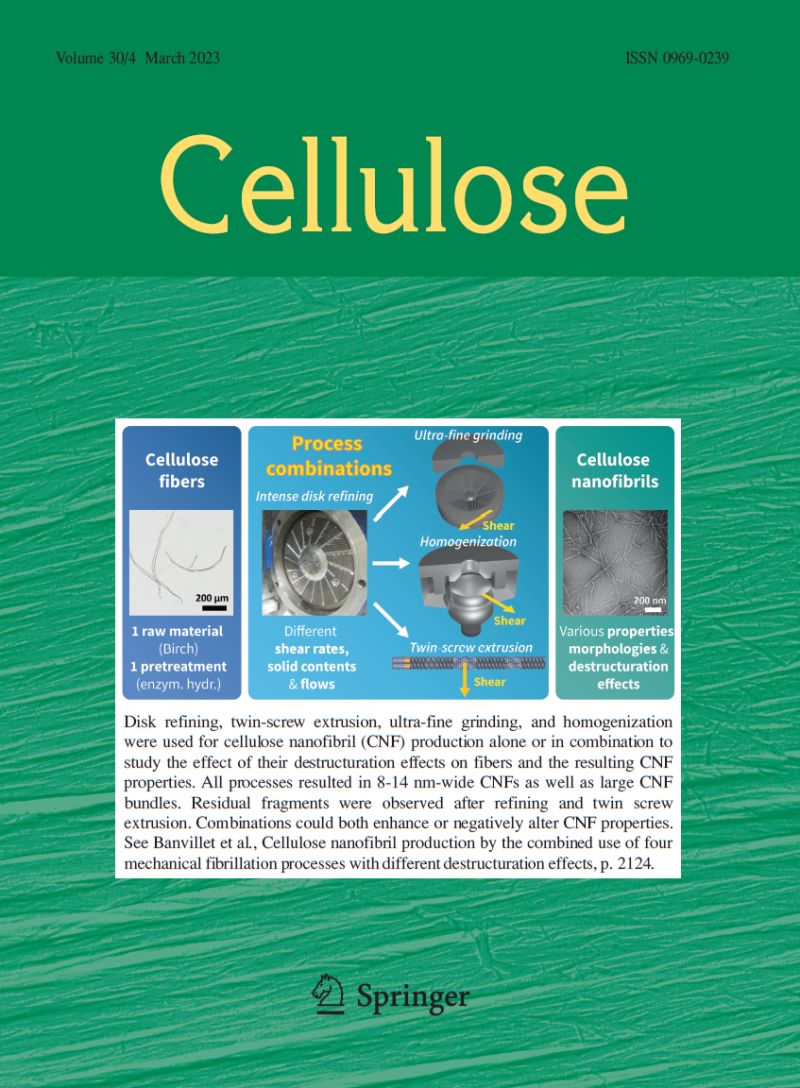High strength, toughness, and wear-resistant photothermal management films assembled from nanocellulose, MXene sediments, and polyvinyl alcohol
Abstract
The waste MXene sediments (MXS) generated during the Ti3AlC2 MAX etching process could not be further utilized, resulting in a significant waste of resources. Herein, the ice-template freeze-drying process was used to promote the spontaneous aggregation of waste MXS into 2D layers with micrometer-scale lateral dimensions. A polydopamine (PDA) layer was constructed on the MXS surface to enhance its mechanical strength while providing its abundant surface-active groups. The fibrillation of cellulose was achieved by deep eutectic solvent treatment of waste wood for lignin cleavage and further sodium chlorite bleaching process to obtain nanocellulose (NC). The low-speed ball-milling process was used to achieve homogeneous mixing and structural self-assembly between MXS@PDA and NC to achieve high value-added applications for MXS and wood materials. The polymer-based composites (named as NMP) with excellent photo-thermal conversion properties and mechanical stability were obtained by compounding NC/MXS@PDA with polyvinyl alcohol (PVA). The NMP-50 film has the tensile strength of 223.30 MPa and toughness of 5.99 MJ/m3, which are 110.78% and 252.35% higher than NC/PVA films. The introduction of NC/MXS@PDA reduces the wear rate of NMP films by 85.04%, resulting in an obvious increase in photothermal conversion efficiency and a significant improvement in thermal stability as compared to NC/PVA films. The strategy of preparing functionalized composites by MXS layers and NC self-assembly process provides a valuable reference for the preparation of high-strength and recyclable photothermal materials.

 求助内容:
求助内容: 应助结果提醒方式:
应助结果提醒方式:


